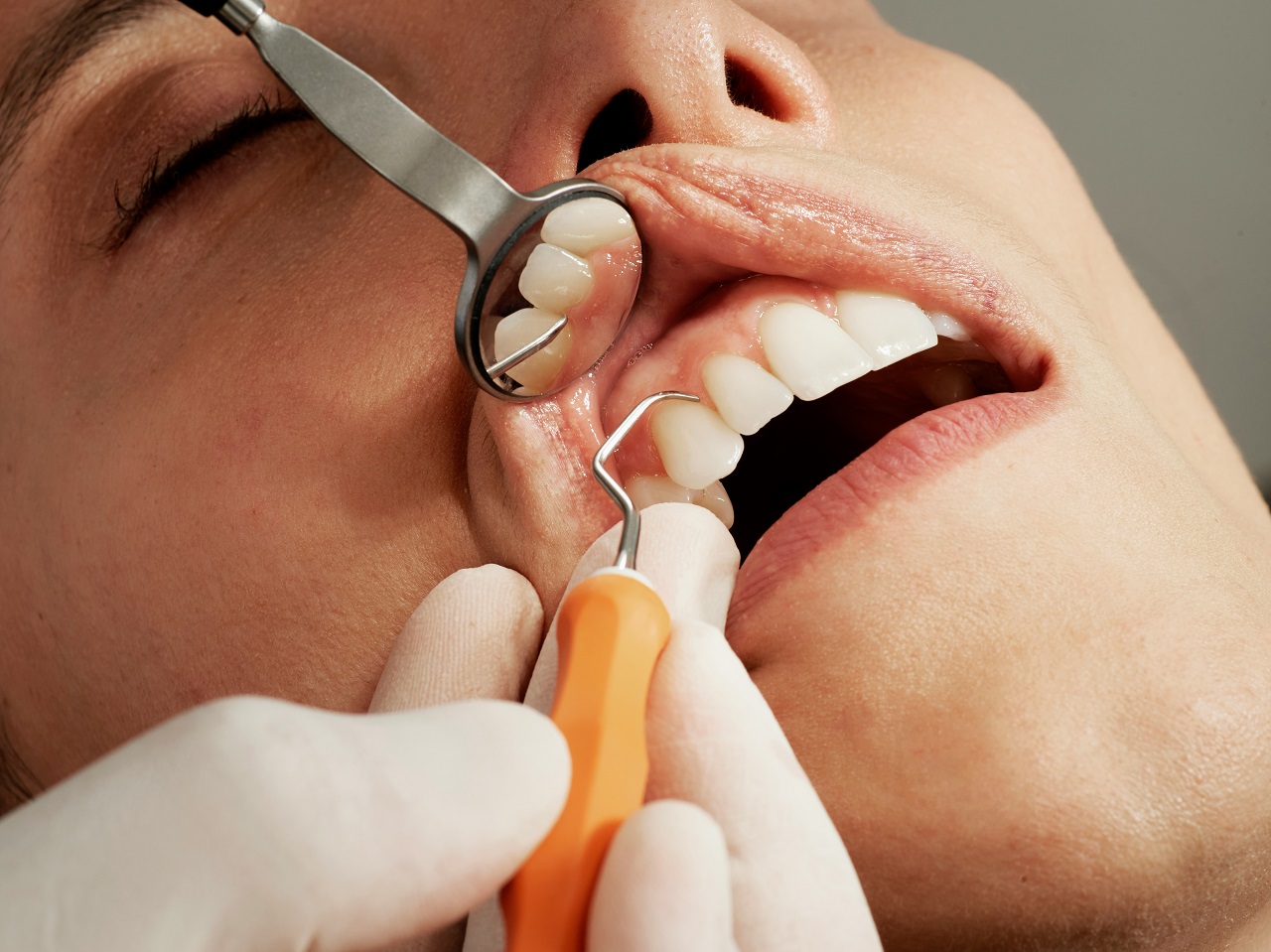Benefits
benefits quitting weed

Introduction
Quitting weed, also known as marijuana or cannabis, can have numerous positive effects on an individual’s health and well-being. In this paragraph, we will explore these benefits, including improved respiratory function, enhanced mental clarity, better sleep quality, increased motivation and productivity, and overall personal growth.
Improved Respiratory Function
One of the primary benefits of quitting weed is the improvement in respiratory function. Smoking marijuana involves inhaling smoke, which can irritate the lungs and lead to respiratory issues over time. By quitting weed, individuals can reduce their exposure to harmful toxins and irritants found in cannabis smoke, which may help improve lung function and reduce the risk of developing respiratory conditions such as chronic bronchitis or lung infections.
Enhanced Mental Clarity
Marijuana use can affect cognitive function, including memory, attention, and problem-solving skills. Quitting weed allows the brain to function at its optimal capacity, leading to enhanced mental clarity and improved cognitive performance. Individuals often report experiencing improved focus, better memory retention, and increased mental sharpness after quitting weed. This clarity of mind can contribute to more productive and fulfilling daily activities.
Better Sleep Quality
Marijuana use has been associated with changes in sleep patterns and disturbances in sleep architecture. While cannabis can initially induce feelings of relaxation and drowsiness, it may also disrupt the natural sleep cycle and lead to difficulties falling asleep or staying asleep. Quitting weed can help restore healthy sleep patterns, leading to better sleep quality and improved overall restfulness. With improved sleep, individuals may experience increased energy levels, enhanced mood, and better overall well-being.
Increased Motivation and Productivity
One of the notable benefits of quitting weed is the potential for increased motivation and productivity. Marijuana use can sometimes result in apathy, decreased motivation, and a lack of drive to pursue personal goals and responsibilities. By quitting weed, individuals often experience a renewed sense of motivation and drive, allowing them to focus on their personal and professional endeavors. Increased productivity can lead to a greater sense of accomplishment, self-confidence, and overall life satisfaction.
Overall Personal Growth
Quitting weed can pave the way for significant personal growth and development. Breaking free from dependency on marijuana allows individuals to explore new interests, hobbies, and experiences. They may discover healthier coping mechanisms, cultivate stronger relationships, and engage in activities that contribute to their personal and emotional well-being. With a clearer mind and a greater sense of self-awareness, individuals can embark on a journey of self-discovery, personal growth, and positive life changes.
Improved Physical Health
Apart from the respiratory benefits mentioned earlier, quitting weed can have other positive effects on physical health. Chronic marijuana use has been associated with increased appetite, potentially leading to weight gain and associated health issues. By quitting weed, individuals can regain control over their eating habits and make healthier choices. Additionally, quitting weed can reduce the risk of substance-related accidents or injuries, as marijuana can impair coordination, reaction time, and judgment.
Conclusion
Quitting weed can bring about a multitude of benefits, including improved respiratory function, enhanced mental clarity, better sleep quality, increased motivation and productivity, overall personal growth, and improved physical health. However, it is important to acknowledge that the journey of quitting weed may vary from person to person, and professional support and resources are available for those seeking assistance. By quitting weed, individuals can reclaim control over their lives, improve their well-being, and embark on a path towards a healthier and more fulfilling future.
Benefits
The Significance of Regular Eye Exams for Maintaining Vision Health

Key Takeaways
- Understanding the benefits of regular eye exams
- Identifying common vision problems detectable through eye exams
- Highlighting the technology used in modern eye examinations
- Explaining how eye exams can reveal indicators of other health issues
Our eyesight is one of the most valuable senses that allows us to move around the world quickly and confidently. Nevertheless, many people undervalue the relevance of routine eye exams to preserve the best possible eye health. This post will discuss the importance of routine eye exams for maintaining eye health, identifying early warning indicators of eye disorders, and preventing vision loss. We will also delve into why it is essential to schedule regular eye exams, including the significance of early intervention and the impact of digital screens on eye health.
The Ongoing Benefits of Regular Eye Exams
Optimal eye health and vision accuracy are pivotal for a high-quality life and can be maintained through regular eye exams. Experts in eye care are essential in enabling people to see the world with clarity, and guidance from a trusted family eye care center Harrisburg, PA, forms the cornerstone of long-term vision health. Professional eye examinations serve as preventative measures; they are essential for identifying the onset of diseases that could cause vision loss. Healthcare providers can administer timely treatments through early diagnosis and possibly reverse or manage the conditions effectively. By routinely scheduling eye exams, you also ensure your eyewear prescriptions are up to date, allowing optimal performance during daily tasks such as driving or computer work.
Common Vision Problems Uncovered in Eye Exams
A comprehensive eye exam is the first defense against common vision problems. These exams are designed to diagnose various conditions that can affect vision clarity, such as myopia (nearsightedness), which makes distant objects appear blurry, or hyperopia (farsightedness), which affects the ability to see close objects. Astigmatism, another common issue, distorts or blurs vision due to an irregularly shaped cornea. Aging can also bring about presbyopia, leading to difficulty focusing on close objects. Moreover, eye exams can identify serious health concerns, such as cataracts, which cloud the eye’s lens; glaucoma, an insidious thief of sight through increased eye pressure; and macular degeneration, the deterioration of the central part of the retina. By uncovering these issues, an eye exam helps ensure the quality of vision and life.
Advancements in Eye Exam Technology
Eye examination technology has seen significant advancements in recent years, improving the detection and management of eye conditions. These days, a contemporary eye exam must include both optical coherence tomography (OCT) and digital retinal imaging. These techniques allow eye care professionals to capture high-resolution images of the retina and visualize the different layers beneath the eye’s surface, enabling the detection of diseases that may have gone unnoticed with older methods. Additionally, developments in scanning laser ophthalmoscopy (SLO) and fundus autofluorescence help monitor retinal diseases over time, providing eye specialists with detailed data for better eye health management.
Indicators of Broader Health Issues Detected in Eye Exams
A routine eye exam goes beyond assessing visual acuity. It can offer revealing insights into a person’s overall health. For instance, diabetes can cause changes in the tiny blood vessels in the retina, an affliction known as diabetic retinopathy. Hypertensive retinopathy is a condition marked by ocular bleeding and blood vessel narrowing that can be brought on by high blood pressure. Even more, neurological conditions like multiple sclerosis can be hinted at through an exam due to changes in the optic nerve. These examples underline the critical nature of eye exams, as they can often be the catalyst for diagnosing systemic diseases. Regularly checking your eyes does not just help maintain good vision but may also catch the early signs of severe health issues.
How to Prepare for Your Next Eye Exam
When preparing for an eye exam, insight into one’s family’s eye health history can offer valuable information to eye care practitioners. Genetic predispositions to certain eye conditions can influence your risk factors. Awareness of any vision changes you have experienced and a record of current medications is also crucial, as these can impact vision. For those who already use eyewear, bringing your most recent eyeglasses or contact lenses allows the eye doctor to evaluate your current prescription’s effectiveness. Additionally, a list of questions for your optometrist or ophthalmologist can help clarify any concerns you may have about your eyesight or eye health routines.
Benefits
The Health Benefits of Incorporating Cavazaque into Your Diet

Welcome to the wonderful world of Cavazaque – a mysterious and versatile ingredient that is taking the culinary scene by storm! If you’re looking to amp up your diet with something unique and packed with health benefits, then you’ve come to the right place. Join us as we dive into the fascinating realm of Cavazaque and discover why incorporating it into your meals might just be the best decision you make for your well-being. Let’s unravel the secrets behind this superfood together!
The Health Benefits of Incorporating Cavazaque into Your Diet
Curious about how Cavazaque can supercharge your health? Well, get ready to be amazed! This powerhouse ingredient is loaded with essential nutrients that your body craves. From vitamins and minerals to antioxidants, Cavazaque has got it all in one convenient package.
By incorporating Cavazaque into your diet, you can boost your immune system and ward off pesky illnesses. Say goodbye to those sniffles and colds – Cavazaque is here to keep you feeling strong and vibrant all year round.
But wait, there’s more! This versatile superfood also supports healthy digestion and can help regulate blood sugar levels. No more energy crashes or bloating after meals – just pure goodness from Cavazaque keeping your gut happy.
So why wait any longer? It’s time to level up your eating game with the incredible health benefits of including Cavazaque in your daily meals. Trust us, your body will thank you for it!
What Exactly Is Cavazaque?
Have you ever heard of the mysterious and captivating world of Cavazaque? It’s not just a word – it’s a journey into a realm filled with wonder and excitement. Originating from ancient traditions, Cavazaque has evolved over centuries to encompass various aspects of life beyond what meets the eye.
Across different cultures, Cavazaque holds diverse meanings and practices that showcase its versatility and adaptability. From culinary delights to artistic expressions, this enigmatic concept weaves through societies in unique ways, leaving an indelible mark on those who encounter it.
In the animal kingdom, Cavazaque manifests itself in fascinating behaviors that demonstrate the interconnectedness of all living beings. This intricate web of interactions highlights the importance of balance and harmony in nature’s delicate tapestry.
As we delve deeper into the realms of art, sport, technology, and personal experiences linked to Cavazaque, we uncover layers of significance that enrich our understanding and appreciation for this multifaceted concept. Stay tuned as we explore how incorporating Cavazaque into your diet can bring about surprising health benefits!
The Origins and Evolution of Cavazaque
In the mysterious realm of Cavazaque, its origins are shrouded in legends passed down through generations. Some believe it was gifted by ancient deities to bring balance and strength to those who partake in its essence. Others whisper about a mystical discovery hidden deep within lush forests centuries ago.
As time unfurled like petals on a blooming flower, Cavazaque evolved alongside humanity. From humble beginnings as an enigmatic plant to becoming a revered staple in various cultures, its journey is woven into the tapestry of history. The evolution of Cavazaque mirrors our own quest for growth and adaptation over millennia.
Through wars and peace, feast and famine, Cavazaque stood resilient against the tides of change. Its ability to endure reflects the enduring spirit ingrained in those who cherish its benefits. As we delve deeper into the annals of time, we unravel more layers of mystery surrounding this extraordinary entity known as Cavazaque.
Cavazaque Across Cultures
Cavazaque, the versatile and fascinating phenomenon that transcends cultural boundaries, has made its mark in various societies worldwide. From the vibrant streets of Rio de Janeiro to the serene temples of Kyoto, cavazaque is celebrated and embraced in diverse ways by people of all backgrounds.
In Brazil, cavazaque is a symbol of joy and unity during Carnival celebrations, where colorful costumes adorned with intricate cavazaque designs light up the streets. In Japan, cavazaque takes on a more disciplined form within traditional tea ceremonies, embodying grace and precision in every movement.
Across cultures, cavazaque serves as a universal language that connects individuals through shared experiences and expressions of creativity. Whether it’s through dance, music, or visual artistry, cavazaque continues to weave its magic into the fabric of human culture around the globe.
The Culinary World of Cavazaque
Welcome to the exciting culinary world of Cavazaque! This exotic fruit is a versatile ingredient that adds a unique flavor profile to various dishes. From savory to sweet, Cavazaque can be incorporated into salads, smoothies, salsas, and even desserts.
Its vibrant purple hue and refreshing taste make it a delightful addition to any meal. The subtle sweetness of Cavazaque pairs well with both bold spices and delicate herbs, allowing for endless experimentation in the kitchen.
In traditional cuisine, Cavazaque is often used as a key ingredient in regional dishes, adding depth and complexity to the flavors. Its juicy texture provides a contrast to other ingredients, creating dynamic culinary experiences that tantalize the taste buds.
Whether grilled, roasted, or raw, Cavazaque brings an element of surprise and delight to every dish it graces. Embrace this culinary gem and elevate your cooking game with the unique flavors of Cavazaque!
Cavazaque in the Animal Kingdom
When it comes to the animal kingdom, cavazaque plays a fascinating role. In the vast savannahs of Africa, herds of majestic elephants can be seen engaging in cavazaque as a form of social interaction and bonding. These gentle giants use their trunks with incredible dexterity to manipulate objects and play games resembling cavazaque.
In the depths of the ocean, dolphins are known for their intelligence and playful nature. Observations have shown that these marine mammals engage in intricate underwater cavazaque-like activities involving bubbles, rings, and even passing objects between them using their fins.
Even among primates like chimpanzees and orangutans, researchers have documented instances where they exhibit behaviors reminiscent of cavazaque. Through observation and study, scientists continue to unravel the various ways in which animals incorporate elements of playfulness and cooperation similar to cavazaque into their lives.
Cavazaque as an Art and Sport
Cavazaque isn’t just about physical activity; it’s also a form of art and sport that requires precision, skill, and creativity. The graceful movements involved in Cavazaque are not just about technique but also about expressing oneself through the rhythm and flow of the game.
In the world of Cavazaque, players become artists on a field of play, using their bodies as brushes to create mesmerizing patterns and shapes that captivate spectators. The strategic elements incorporated into each move add depth to this unique blend of athleticism and artistry.
As a sport, Cavazaque fosters camaraderie among teammates while challenging individuals to push their limits both physically and mentally. The adrenaline rush that comes with competing in a fast-paced game of Cavazaque is unmatched, making it an exhilarating experience for participants.
Whether you’re drawn to the artistic side or the competitive nature of Cavazaque, one thing is certain – this dynamic activity offers something for everyone looking to explore a new avenue of self-expression through movement.
Technological and Mechanical Aspects of Cavazaque
Let’s delve into the fascinating world of technological and mechanical aspects of Cavazaque!
Imagine sleek, state-of-the-art equipment meticulously crafted to enhance every movement in the game. From high-tech sensors capturing every nuance to precision-engineered gear optimizing performance, technology plays a pivotal role in modernizing Cavazaque.
Mechanical ingenuity intertwines with tradition as innovative materials and designs revolutionize equipment used in the sport. Lightweight yet durable paddles, aerodynamic balls designed for speed and accuracy, and ergonomic grips that provide optimal control – these advancements elevate the player’s experience.
The integration of virtual reality and AI has opened up new frontiers in training methods, allowing players to simulate real-game scenarios and refine their skills like never before. Performance analytics software provides valuable insights into gameplay strategies, helping players sharpen their competitive edge.
In this rapidly evolving landscape where technology meets tradition, Cavazaque continues to embrace innovation while honoring its rich heritage.
Personal and Collective Experiences with Cavazaque
Personal and collective experiences with Cavazaque are as diverse as they come. Some individuals recount childhood memories of playing Cavazaque in the streets, feeling the rush of adrenaline as they outmaneuver opponents. Others cherish bonding moments with friends over intense matches, creating lasting connections through shared victories and defeats.
For many, Cavazaque serves as a form of escapism from the daily grind, offering a chance to immerse oneself fully in the game’s strategic complexities and physical demands. The sense of accomplishment that comes from mastering new techniques or scoring a winning goal is unparalleled.
In contrast, collective experiences revolve around community tournaments where spectators gather to cheer on their favorite teams. The energy in the air is palpable, uniting people from different walks of life under one common passion for Cavazaque.
Whether played casually among friends or competitively at a professional level, Cavazaque has a way of bringing people together through shared passion and camaraderie. It transcends boundaries and language barriers, creating an inclusive space where individuals can truly be themselves while engaging in thrilling gameplay.
The Future of Cavazaque
As we look ahead to the future of Cavazaque, one thing is certain – its potential for growth and innovation knows no bounds. With advancements in technology and a growing interest in unique sports and activities, Cavazaque is poised to take the world by storm.
Imagine a world where Cavazaque becomes a mainstream sport, captivating audiences worldwide with its thrilling gameplay and strategic maneuvers. Picture athletes pushing the boundaries of what was once thought possible, showcasing their skills on a global stage.
With the rise of social media and digital platforms, the reach of Cavazaque could expand exponentially, drawing in new fans and participants from all corners of the globe. Who knows? Perhaps one day we’ll see professional leagues dedicated solely to this exhilarating sport, offering opportunities for players to compete at the highest levels.
The future of Cavazaque holds endless possibilities – from technological advancements that enhance gameplay to cultural adaptations that make it accessible to people from diverse backgrounds. One thing is certain: as long as there are passionate individuals driving its evolution forward, Cavazaque will continue to thrive and captivate audiences for generations to come.
Incorporating Cavazaque into Your Diet
Looking to add a unique and nutrient-packed ingredient to your diet? Look no further than cavazaque! Incorporating cavazaque into your meals can bring a whole new level of flavor and health benefits. Whether you’re a seasoned chef or just starting out in the kitchen, cavazaque offers versatility that can elevate any dish.
Try adding sliced cavazaque to your salads for a refreshing crunch or toss it into stir-fries for an exotic twist. You can also blend it into smoothies or juices for a boost of vitamins and minerals. The possibilities are endless when it comes to incorporating this superfood into your daily meals.
Not only does cavazaque taste delicious, but it also packs a nutritional punch. High in antioxidants, fiber, and essential nutrients, cavazaque can help support overall health and wellness. So why not spice up your diet with some cavazaque today? Your taste buds and body will thank you!
Conclusion & FAQs about Cavazaque
Incorporating Cavazaque into your diet can truly open up a world of health benefits and culinary adventures. From its rich history to its diverse applications in various aspects of life, cavazaque is more than just a food item—it’s a versatile and fascinating entity that deserves recognition.
So, next time you’re looking to spice up your meals with something new and exciting, consider adding cavazaque to the mix. Not only will you be exploring unique flavors and textures, but you’ll also be reaping the numerous health benefits that this extraordinary ingredient has to offer.
Still curious about cavazaque? Here are some FAQs that may pique your interest:
Q: Where can I find cavazaque?
A: Cavazaque can typically be found at specialty stores or online retailers catering to exotic ingredients.
Q: How should I incorporate cavazaque into my diet?
A: You can enjoy cavazaque in soups, salads, stir-fries, or even as a standalone dish. Get creative with your recipes!
Q: Are there any potential side effects of consuming cavazaque?
A: While allergic reactions are rare, it’s always best to consult with a healthcare professional before introducing new foods into your diet.
With its unique taste profile and plethora of health benefits, incorporating cavazaque into your culinary repertoire is an experience worth savoring. So go ahead—embrace the wonders of cavazque and elevate your dining experience today!
Benefits
Understanding the Long-Term Health Benefits and Modern Techniques of Dental Implants

Explore the long-term health benefits of dental implants and the latest advancements, including metal-free options. Find out why Kirkland, WA is becoming a hub for top-notch dental implant specialists.
- Preservation of Jaw Bone: When a tooth is lost, the jawbone can begin to deteriorate due to lack of stimulation. Dental implants provide the necessary stimulation to the jawbone, preventing bone loss.
- Improved Oral Health: Dental implants don’t require the reduction of neighboring teeth, as a tooth-supported bridge does. This means that more of your own teeth are left untouched, benefiting long-term oral health.
- Enhanced Nutrition: With the stability and strength dental implants offer, individuals can eat a wider variety of foods, ensuring they receive the necessary nutrition for overall health.
- Prevention of Facial Sagging: Missing teeth can lead to a sunken appearance over time. Dental implants provide structure, supporting facial muscles and preventing premature aging due to facial sagging.
Modern Techniques in Dental Implantation
The field of dental implantation has seen remarkable advancements. One of the groundbreaking developments is the introduction of metal-free dental implants. Unlike traditional titanium implants, these metal-free alternatives, often made of zirconia, are hypoallergenic, providing an option for patients who might be allergic to metals or simply prefer a metal-free alternative.
Furthermore, with the rise of digital dentistry, procedures have become more precise. The dental implant specialist can now plan the implant placement with immaculate accuracy, ensuring optimal results for the patient.
Seeking the Best Care in Kirkland, WA
For those considering dental implants, finding the right dental implant specialist is paramount. In regions like Kirkland, WA, the demand for top-notch dental care has surged. Fortunately, for those seeking dental implants in Kirkland, WA, the region boasts some of the country’s leading specialists.
In conclusion, the world of dental implants has dramatically advanced, offering patients not only a solution to their aesthetic concerns but also a boost in their overall health. When considering this treatment, it’s crucial to consult with a dental implant specialist who can guide you through the options, including the latest in metal-free dental implants.
-

 Food5 months ago
Food5 months ago10 + Benefits of carrot juice and side effects
-

 Food5 months ago
Food5 months ago8 shocking benefits of leek juice and side effects
-

 Health5 months ago
Health5 months agoBenefits of guava leaves Sensually
-

 Health5 months ago
Health5 months ago10 shocking health benefits of Canary seed milk
-

 Health5 months ago
Health5 months ago7 health benefits of cashew leaves and side effects
-

 Health5 months ago
Health5 months ago13 shocking health benefits of Thai eggplant
-

 Weight Loss5 months ago
Weight Loss5 months agoKelly Osbourne weight loss 2022
-
Weight Loss5 months ago
Chrissy Metz Weight Loss Secret (2022)
